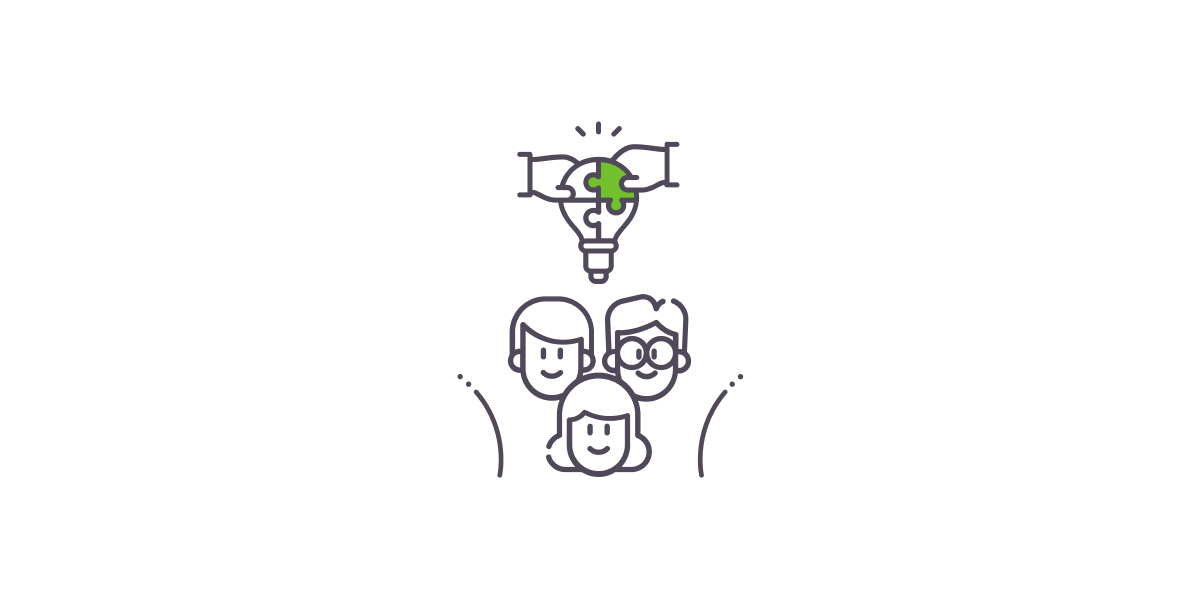
July 14, 2025
Searching for Gold (Standards) With Agentic Coding
April 4, 2022

Share:
Let’s say you want to go to market quickly with your next great software idea but are struggling with narrowing your focus. You’ve used the term “Minimal Viable Product” (MVP), so many times it has lost its meaning. It’s hard to balance getting enough information to identify the most valuable things to focus on with delivering iterative product increments as fast as possible. You also want to respond to your market as you get feedback from your customers.
At Acklen Avenue, we help all types of customers deliver high-quality software quickly in a way that maximizes value and learning. After doing this for over a decade, we’ve found a few key factors that have helped us make our clients successful:

Software that solves the end user’s problem makes them happy, and happy users become loyal customers. Loyal customers mean higher revenue, less churn, and ultimately delighted stakeholders. However, it can be challenging to determine the user’s most critical issues to ensure you deliver the most valuable features first.
The Agile teams at Acklen Avenue have found that understanding our client’s product vision allows us to get to know their target market and their specific needs. Then we can drill down into particular personas and the goals they would be trying to achieve with our solution to identify and prioritize the smallest, most valuable features quickly. We often use Roman Pichler’s Product Vision and simple Persona templates to understand business and customer context quickly.
Working this way allows you to aggressively trim your user stories to be laser-focused so that each release solves a customer’s specific problem completely and efficiently. Then when your teams understand the business context and specific user problems, they can create a streamlined product roadmap to work from that will maximize value.

Even when you focus on a specific problem, you can still get bogged down in trying to create the perfect solution. Sometimes, you can include features that are not essential to solving the issue in a misguided attempt to please your user. They may seem like small additions, but they can add up over time and can result in death by a thousand slices. Of course, you can always implement these features later, but you can never get back the time you spent on less valuable functionality.
Acklen teams leverage Personas and techniques like Visual Story Slicing to zero in on the minimal functionality required to get the user to their goal. There may be times when you feel it is prudent to add a little extra to a feature to excite your users, but we always start with the bare minimum and expand from there. These other non-essential ideas are captured but can be deprioritized to allow for more valuable functionality to be delivered first.
“Your teams need to understand how each feature contributes to one of the four types of business value to prioritize their work better.” (site BlackSwanFarming)
When it gets hard to figure out just what to leave out, we recommend you go back to the business value of each feature. If we successfully solve a user problem, it should do at least one of four things for the company: increase revenue, protect revenue, avoid costs, or decrease costs. Add cost of delay urgency models into the mix, and your organization will start to make better choices for your customers and the business.

What you think is valuable to your customers isn’t always what your customers think. This is a hard lesson learned by many companies, often too late. The only way to truly learn is to deliver and see how the market reacts. The ultimate feedback will be if users actually engage with your solution. If you focus on delivering solutions to their problems quickly, you can get faster feedback. You can then take the knowledge you have gained, incorporate it into subsequent iterations of your product to better serve your customers and gain more value.
We previously mentioned assigning some business value to features such as how much they might potentially increase revenue. If customers don’t buy your product and revenue doesn’t increase, that is definitely one way to learn. These are lagging indicators, however, and by the time you gain this knowledge, you may have missed critical opportunities to pivot. With smaller, more frequent product releases the impact can be reduced.
Acklen recommends that along with outlining the underlying business value of your proposed features, you try to identify usage metrics that would be a more leading indicator for how much your users are engaging with a new feature. For instance, if you are adding a new report to a premium subscription level of your software, you might offer a free trial for all levels initially to see how many people use it. Then you can track how many people upgrade their subscription to keep using the report once the free trial is over. There also may be things to learn in larger patterns like the demographics of the customers that tended to use the report more than others.
The key is to be engaged with your customers and learn from them. All of this learning helps inform how to make subsequent product releases more valuable for everyone.

Of course, no one sets out to fail, but it is an inevitable part of learning. Not every feature or implementation is going to hit the mark perfectly. In business, you cannot be afraid of failure but should be very concerned about not learning anything from it.
This does require you to be highly collaborative with your customers and open to the feedback you receive. No one likes to hear their baby is ugly, but if your product is not connecting with the market the way you thought, you need to take a hard look at why and adapt. You may even need to decide to drop a feature or service if it is not having an appropriate return on investment.
By releasing small increments of value to your customers quickly, you mitigate a significant amount of the impact of these failures by finding them early and being able to recover from them swiftly. In addition, business agility like this can free you up to experiment a bit more, fostering a culture of learning in your organization.

Valuable, high-quality software does not write itself. Instead, it requires people in many roles working with a passion for helping their target users. When you provide your teams with an environment to do their best work, they will provide consistent, reliable delivery.
Consistent, reliable delivery leads to better forecasting, met commitments, and predictable budget and spending. Then it is possible for you, as a leader, to focus on strategy, innovation, and moving your business forward.
By including all your team members in all the other efforts we have mentioned, you create a group of highly engaged and passionate people. When you illustrate to your team how they are solving the most critical problems of your users, you give them purpose, which is a powerful motivator. Providing a process that allows them to deliver in iterations and receive feedback quickly gives them room to experiment and find out what works best for them and the users they are trying to support.